-
 Bitcoin
Bitcoin $83,309.8774
-1.88% -
 Ethereum
Ethereum $1,591.3660
-2.42% -
 Tether USDt
Tether USDt $0.9998
-0.01% -
 XRP
XRP $2.0864
-2.28% -
 BNB
BNB $580.9809
-0.68% -
 Solana
Solana $125.6682
-3.01% -
 USDC
USDC $0.9999
0.00% -
 TRON
TRON $0.2516
0.03% -
 Dogecoin
Dogecoin $0.1542
-3.08% -
 Cardano
Cardano $0.6142
-3.69% -
 UNUS SED LEO
UNUS SED LEO $9.3431
-0.92% -
 Chainlink
Chainlink $12.3641
-2.37% -
 Avalanche
Avalanche $18.8865
-5.31% -
 Stellar
Stellar $0.2358
-2.40% -
 Toncoin
Toncoin $2.8805
-0.91% -
 Shiba Inu
Shiba Inu $0.0...01169
-1.89% -
 Sui
Sui $2.1008
-4.00% -
 Hedera
Hedera $0.1574
-5.48% -
 Bitcoin Cash
Bitcoin Cash $318.9019
-1.04% -
 Litecoin
Litecoin $75.9077
-2.52% -
 Polkadot
Polkadot $3.5432
-3.69% -
 Dai
Dai $1.0000
0.00% -
 Bitget Token
Bitget Token $4.2538
-1.47% -
 Hyperliquid
Hyperliquid $15.1227
-5.40% -
 Ethena USDe
Ethena USDe $0.9991
0.00% -
 Pi
Pi $0.6199
-16.77% -
 Monero
Monero $217.3319
2.19% -
 Uniswap
Uniswap $5.2227
-2.58% -
 OKB
OKB $52.2436
1.28% -
 Pepe
Pepe $0.0...07082
-3.62%
How to migrate stored data from Filecoin mining?
Migrating data on Filecoin involves using tools like Lotus to export, transfer, and import data, ensuring integrity and security throughout the process.
Apr 14, 2025 at 10:49 pm
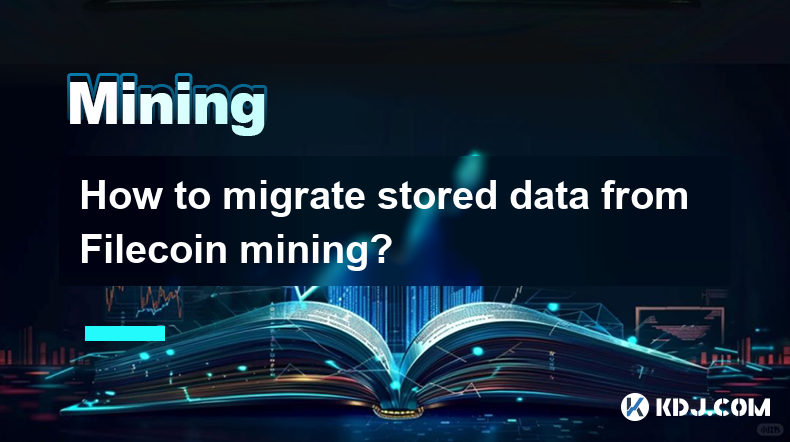
Migrating stored data from Filecoin mining involves a series of steps that require careful planning and execution. Filecoin is a decentralized storage network that allows users to store, retrieve, and transfer data. When you need to migrate your data from one storage provider to another, or to a different location within the Filecoin network, it is crucial to understand the process to ensure data integrity and security.
Understanding Filecoin Data Storage
Before diving into the migration process, it's important to understand how data is stored on Filecoin. Filecoin uses a proof-of-replication and proof-of-spacetime to ensure that data is stored correctly and reliably. Miners on the Filecoin network compete to store data and are rewarded in FIL tokens for their services. When you store data on Filecoin, it is split into smaller pieces, encrypted, and distributed across multiple miners to enhance security and redundancy.
Preparing for Data Migration
The first step in migrating your data is to prepare thoroughly. Identify the data you wish to migrate and ensure you have a clear understanding of its size and type. It's also important to choose a new storage provider or location within the Filecoin network that meets your requirements for security, reliability, and cost. Make sure to review the terms and conditions of the new provider to ensure they align with your needs.
Initiating the Migration Process
To initiate the migration process, you will need to use a Filecoin client or a tool that supports data migration. One popular tool for this purpose is the Lotus client. Here are the steps to migrate your data using Lotus:
- Install Lotus: Download and install the Lotus client on your machine. Follow the official installation guide to set it up correctly.
- Connect to the Filecoin Network: Use the Lotus client to connect to the Filecoin network. You will need to configure your node to interact with the network.
- Export the Data: Use the Lotus client to export the data you wish to migrate. This can be done using the
lotus client retrievecommand. Specify the data CID (Content Identifier) and the destination path where you want to save the data. - Transfer the Data: Once the data is exported, transfer it to the new storage provider or location within the Filecoin network. This may involve uploading the data to the new provider's system.
- Import the Data: Use the Lotus client to import the data into the new storage location. This can be done using the
lotus client storecommand. Specify the path to the data and the new storage provider's details.
Verifying Data Integrity
After the migration is complete, it's crucial to verify the integrity of the data to ensure that it has been transferred correctly. Use the Lotus client to check the data's integrity by comparing the original and migrated data's CIDs. If the CIDs match, it indicates that the data has been migrated successfully without any corruption.
Handling Large Datasets
Migrating large datasets can be challenging and time-consuming. To handle large datasets effectively, consider breaking them into smaller chunks and migrating them in batches. This approach can help manage the migration process more efficiently and reduce the risk of errors. Additionally, ensure that you have sufficient bandwidth and storage capacity to handle the migration of large datasets.
Ensuring Data Security
Data security is paramount during the migration process. Encrypt your data before migration to protect it from unauthorized access. Use strong encryption algorithms and ensure that the encryption keys are securely managed. Additionally, consider using secure communication channels when transferring data to the new storage provider.
Monitoring the Migration Process
Monitoring the migration process is essential to ensure its success. Use monitoring tools provided by the Lotus client or third-party services to track the progress of the migration. Keep an eye on any errors or issues that may arise and address them promptly to avoid data loss or corruption.
FAQ
Q1: Can I migrate data between different Filecoin storage providers?
Yes, you can migrate data between different Filecoin storage providers. The process involves exporting the data from the current provider and importing it into the new provider's system using tools like the Lotus client.
Q2: How long does it typically take to migrate data on Filecoin?
The duration of the migration process depends on the size of the data and the network conditions. Migrating small datasets may take a few hours, while large datasets can take several days or even weeks.
Q3: What should I do if I encounter errors during the migration process?
If you encounter errors during the migration process, review the error messages provided by the Lotus client. Common issues include network connectivity problems, insufficient storage space, or incorrect configuration. Address these issues and retry the migration process.
Q4: Is it possible to migrate data without downtime?
While it is challenging to migrate data without any downtime, it is possible to minimize it by planning the migration carefully. Migrate data in batches and ensure that critical data is migrated first to reduce the impact of any potential downtime.
Disclaimer:info@kdj.com
The information provided is not trading advice. kdj.com does not assume any responsibility for any investments made based on the information provided in this article. Cryptocurrencies are highly volatile and it is highly recommended that you invest with caution after thorough research!
If you believe that the content used on this website infringes your copyright, please contact us immediately (info@kdj.com) and we will delete it promptly.
- Synthetic Stablecoin Issuer Ethena Labs Shuts Down Operations in Germany
- 2025-04-16 10:15:20
- Make no mistake – Pulsz slots are top-notch
- 2025-04-16 10:15:20
- Pre-draft, Paige Bueckers Dazzled in a Brown Crystal-embellished Power Suit
- 2025-04-16 10:10:13
- As Q2 begins, crypto markets are showing signs of renewed optimism — and with it, fresh opportunities for strategic investment.
- 2025-04-16 10:10:13
- Top 3 Cryptocurrencies to Buy Right Now (April 15th)
- 2025-04-16 10:05:12
- Ethereum (ETH) Shows Early Signs of Recovery as Whales Accumulate
- 2025-04-16 10:05:12
Related knowledge
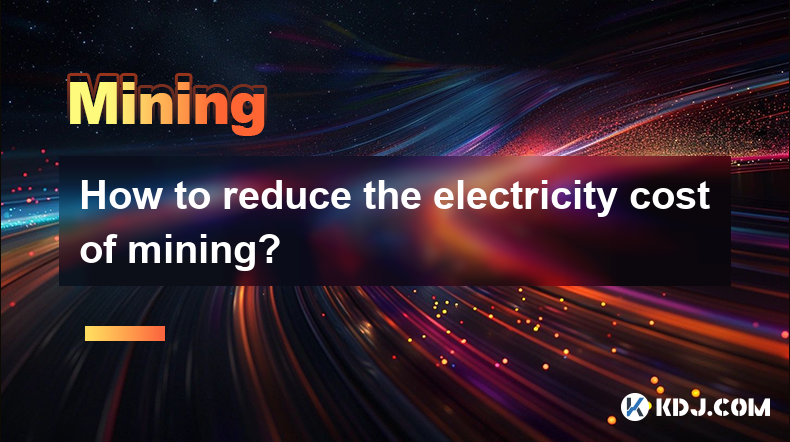
How to reduce the electricity cost of mining?
Apr 16,2025 at 08:42am
Mining cryptocurrencies, particularly Bitcoin, is an energy-intensive process that can lead to significant electricity costs. However, there are several strategies that miners can employ to reduce these expenses and make their operations more cost-effective. In this article, we will explore various methods to minimize the electricity cost of mining. Cho...
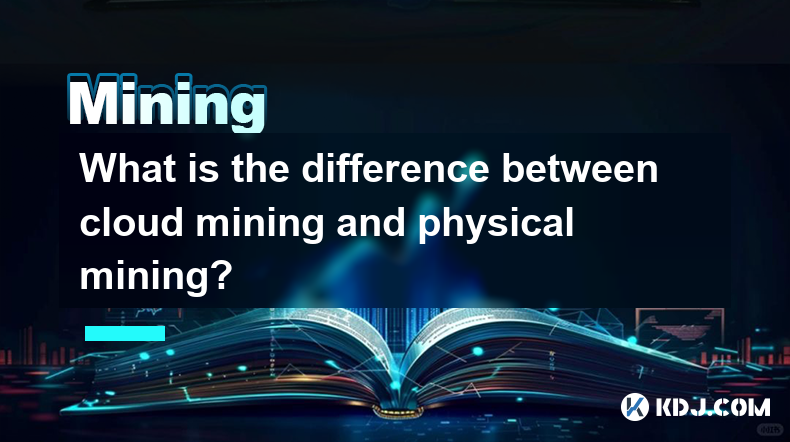
What is the difference between cloud mining and physical mining?
Apr 16,2025 at 01:49am
What is the difference between cloud mining and physical mining? In the world of cryptocurrencies, mining is the process by which new coins are generated and transactions are verified and added to the blockchain. There are two primary methods of mining: cloud mining and physical mining. Understanding the differences between these two approaches can help...
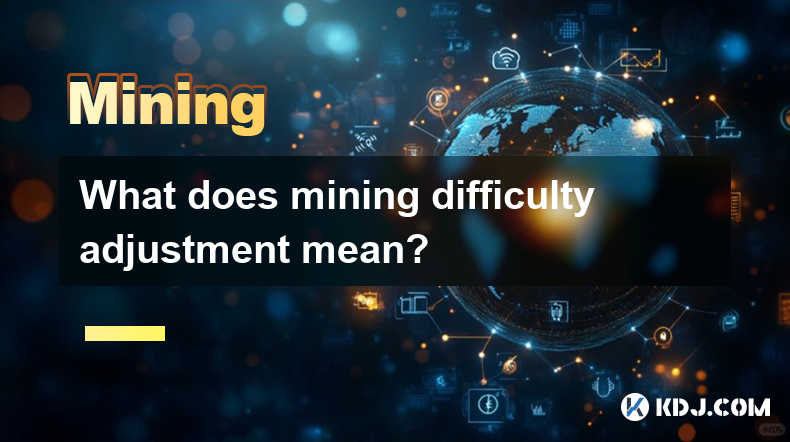
What does mining difficulty adjustment mean?
Apr 16,2025 at 12:42am
What does mining difficulty adjustment mean? Mining difficulty adjustment is a crucial mechanism in blockchain networks, particularly in Proof of Work (PoW) systems like Bitcoin. It ensures that the rate at which new blocks are added to the blockchain remains consistent, despite fluctuations in the total computational power (hash rate) of the network. T...
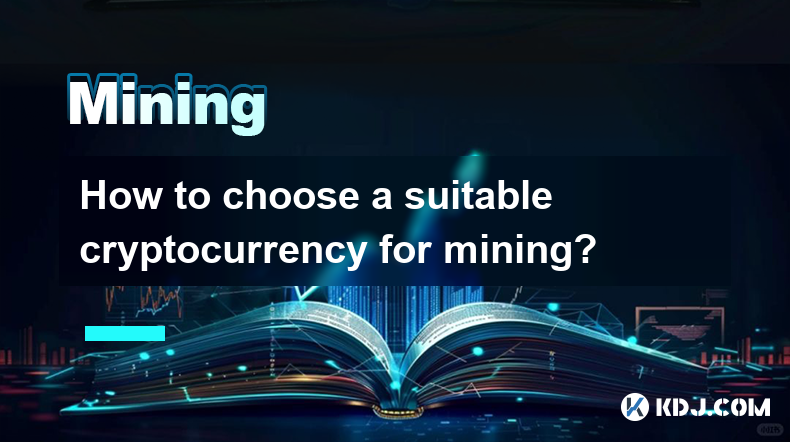
How to choose a suitable cryptocurrency for mining?
Apr 16,2025 at 10:15am
Choosing a suitable cryptocurrency for mining involves several considerations that can impact your profitability and efficiency. Mining cryptocurrencies can be a rewarding venture, but it requires careful planning and research. In this article, we will explore the key factors to consider when selecting a cryptocurrency for mining, ensuring you make an i...
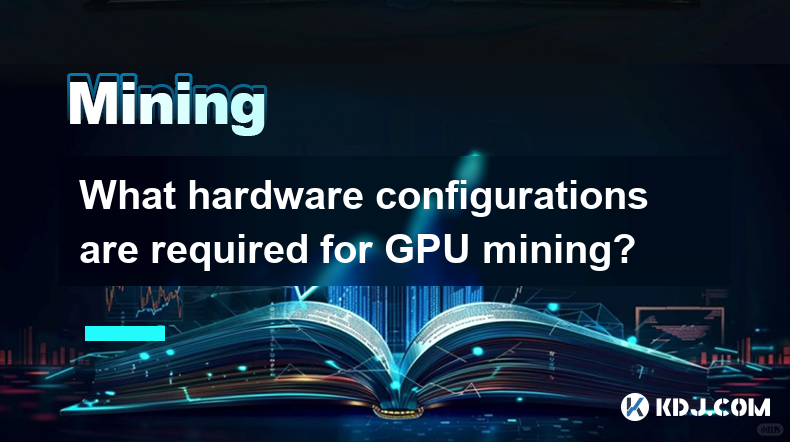
What hardware configurations are required for GPU mining?
Apr 16,2025 at 09:21am
GPU mining has become a popular method for cryptocurrency enthusiasts to mine various cryptocurrencies, such as Ethereum, Ravencoin, and others. To successfully engage in GPU mining, it is essential to understand the hardware configurations required to maximize efficiency and profitability. This article will delve into the specifics of what you need to ...
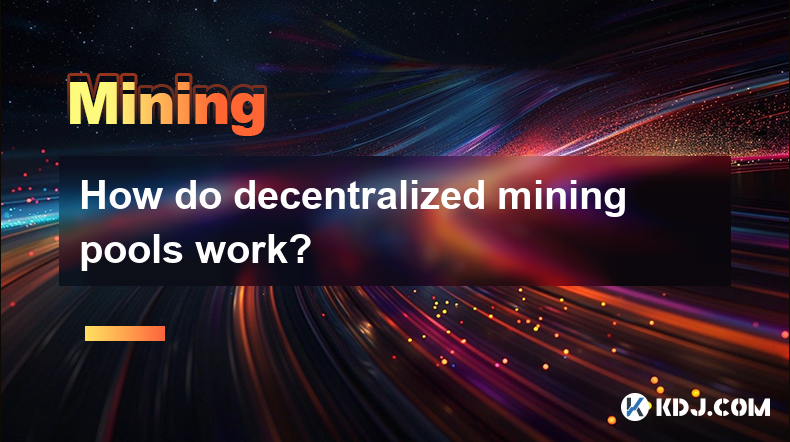
How do decentralized mining pools work?
Apr 16,2025 at 05:42am
Decentralized mining pools represent a significant evolution in the world of cryptocurrency mining, offering a more democratic and transparent approach compared to traditional centralized pools. In this article, we will explore the mechanics of decentralized mining pools, their benefits, and how they operate within the cryptocurrency ecosystem. What are...

How to reduce the electricity cost of mining?
Apr 16,2025 at 08:42am
Mining cryptocurrencies, particularly Bitcoin, is an energy-intensive process that can lead to significant electricity costs. However, there are several strategies that miners can employ to reduce these expenses and make their operations more cost-effective. In this article, we will explore various methods to minimize the electricity cost of mining. Cho...

What is the difference between cloud mining and physical mining?
Apr 16,2025 at 01:49am
What is the difference between cloud mining and physical mining? In the world of cryptocurrencies, mining is the process by which new coins are generated and transactions are verified and added to the blockchain. There are two primary methods of mining: cloud mining and physical mining. Understanding the differences between these two approaches can help...

What does mining difficulty adjustment mean?
Apr 16,2025 at 12:42am
What does mining difficulty adjustment mean? Mining difficulty adjustment is a crucial mechanism in blockchain networks, particularly in Proof of Work (PoW) systems like Bitcoin. It ensures that the rate at which new blocks are added to the blockchain remains consistent, despite fluctuations in the total computational power (hash rate) of the network. T...

How to choose a suitable cryptocurrency for mining?
Apr 16,2025 at 10:15am
Choosing a suitable cryptocurrency for mining involves several considerations that can impact your profitability and efficiency. Mining cryptocurrencies can be a rewarding venture, but it requires careful planning and research. In this article, we will explore the key factors to consider when selecting a cryptocurrency for mining, ensuring you make an i...

What hardware configurations are required for GPU mining?
Apr 16,2025 at 09:21am
GPU mining has become a popular method for cryptocurrency enthusiasts to mine various cryptocurrencies, such as Ethereum, Ravencoin, and others. To successfully engage in GPU mining, it is essential to understand the hardware configurations required to maximize efficiency and profitability. This article will delve into the specifics of what you need to ...

How do decentralized mining pools work?
Apr 16,2025 at 05:42am
Decentralized mining pools represent a significant evolution in the world of cryptocurrency mining, offering a more democratic and transparent approach compared to traditional centralized pools. In this article, we will explore the mechanics of decentralized mining pools, their benefits, and how they operate within the cryptocurrency ecosystem. What are...
See all articles























































































